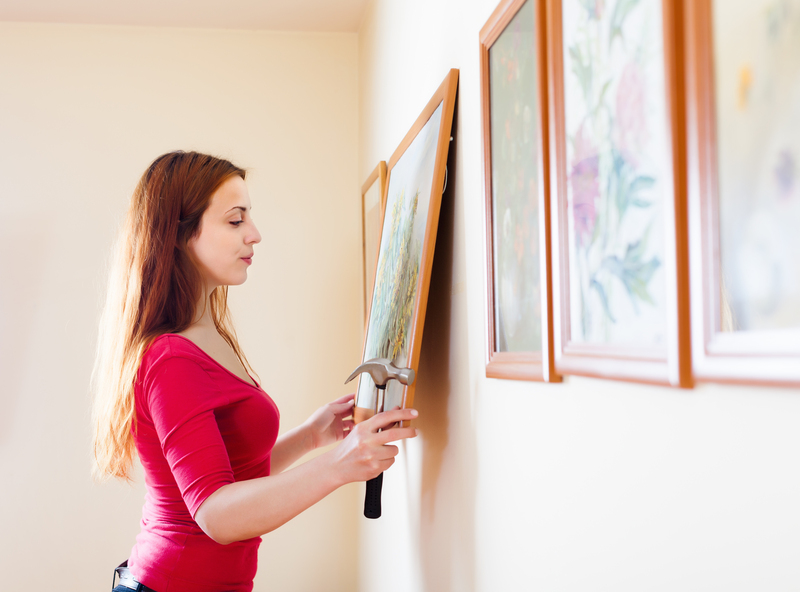Learning from DIY piano moving disasters and opting for professional help
Posted on 22/05/2025
Learning from DIY Piano Moving Disasters and Opting for Professional Help
Moving a piano is more than just heavy lifting--it's a delicate operation that requires precise skill, experience, and the right equipment. Many ambitious homeowners attempt do-it-yourself (DIY) piano moves, lured by the promise of saving money or feeling confident after a few video tutorials. Unfortunately, the tale often ends in disaster: damaged instruments, personal injuries, or even irreparable damage to homes. Let's explore what can go wrong in DIY piano moving attempts, and understand why opting for professional piano movers is the safest, wisest choice.

The Real Risks of Moving a Piano Yourself
Whether you own a compact upright or a grand concert piano, moving it involves maneuvering a bulky, intricate, and often expensive instrument through potentially tight or hazardous spaces. Here are some common disasters encountered during self-move piano relocations:
1. Physical Damage to the Piano
- Scratched or Broken Finish: One sudden slip, and your piano's polished exterior can get gouged or scratched, affecting its beauty and value.
- Internal Mechanism Damage: The intricate action inside the piano can be jarred by bumps or improper lifting, leading to tuning problems or even complete inoperability.
- Broken Legs, Pedals, Casters: Upright and grand pianos have vulnerable projections that snap easily if not appropriately cushioned or supported.
2. Personal Injury
- Back Strain & Pulled Muscles: With uprights weighing between 300-500 pounds and grands tipping the scales at over 1,000 pounds, improper lifting technique can cause serious injury.
- Crushed Fingers & Toes: Unstable pianos shift suddenly, pinching or breaking appendages if they are in the wrong place.
- Slips, Trips, and Falls: Maneuvering through narrow hallways or stairs invites tripping accidents that can cause broken bones or worse.
3. Damage to Your Home
- Gouged Floors & Scratched Walls: Even the smallest miscalculation can lead to dragging marks, broken tiles, or battered walls.
- Broken Banisters, Railings, or Steps: Pianos that are dropped can shatter stairs or crash through banisters, resulting in costly repairs.
4. Liability Issues
- Injury Liability: If friends or helpers get hurt, you may be responsible for their medical costs.
- No Insurance Back-Up: Standard home insurance typically doesn't cover DIY moving accidents, leaving you to pay for damages.
Why DIY Piano Moves Go Wrong: The Hard Lessons
Many failures in do-it-yourself piano moving come down to a few recurring pitfalls:
- Underestimating the Piano's Weight: Pianos are far heavier than they look and are often unevenly weighted.
- Poor Planning: Failing to measure doorways, stairs, and tight corners leads to last-minute improvisations and accidents.
- Lack of Proper Equipment: Using makeshift dollies, inadequate padding, or ropes increases risk.
- Inexperienced Helpers: Friends or roommates often lack the coordination or strength for such a specialized task.
- No Experience with Disassembly/Reassembly: Many pianos require partial disassembly to move safely, which DIY movers rarely know how to handle.
Real-life DIY piano moving disasters often share these errors, and the consequences can be catastrophic. Just a single mishap can destroy cherished family heirlooms or put lives in danger.
Real Stories: DIY Piano Moving Nightmares
To highlight the true costs of DIY piano moving failures, here are a few cautionary tales from those who've tried and regretted it:
Case Study 1: The Upright Through the Wall
A family attempted to move an upright piano from the living room to a basement. Navigating a tight stairwell, they lost control, sending the piano crashing through a plaster wall and breaking a banister. Not only was the piano badly chipped, but the repair bill for the home exceeded $3,000.
Case Study 2: The Grand Piano Slip
A group of college students rented a truck to move a baby grand. Without proper straps or padding, the piano shifted during transport, breaking a leg and damaging the pedals. The restoration cost more than professional movers would have charged--plus the loss of the instrument's original tone.
Case Study 3: Injury on the Job
During a DIY piano move, one helper slipped on a rain-slicked driveway, trapping his hand under the falling piano. The injury required surgery and months off work--all because the move wasn't planned for bad weather or professional equipment.
What Makes Piano Moving So Tricky?
Unlike most furniture, a piano's value lies both in its *monetary worth* and its *emotional significance*. These are highly complex, precision instruments with thousands of moving parts--each sensitive to jolts, temperature, and humidity. Here's what makes professional piano moving essential:
- Weight Distribution: Pianos are not only heavy but unevenly weighted, often tipping unexpectedly.
- Fragility: Even the slightest jolt can misalign internal components, affecting sound quality or playability.
- Bulk: Getting a piano through a doorway, hallway, or stairwell often requires expert maneuvering or partial disassembly.
- Climate Sensitivity: Pianos require stable temperature and humidity, even during transport, to prevent warping and cracking.
*Because of these factors*, using professional piano moving services is not a luxury but a necessity for protecting your investment.
Why You Should Always Choose Professional Piano Movers
Hiring expert piano movers eliminates nearly every risk associated with moving your prized instrument. Here's what professionals guarantee:
1. Specialized Equipment
- Piano Dollies: Reinforced, rubberized dollies specifically designed for heavy pianos.
- Straps and Padding: Prevents shifting, scratches, and finish damage.
- Skid Boards & Ramps: For safely navigating stairs without injury or property damage.
2. Experienced Teams
- Training: Movers receive hands-on training in piano handling and safety protocols.
- Teamwork: Professionals coordinate to manage tricky obstacles and execute precise movements.
3. Insurance Coverage
- Liability: If a mishap occurs, the movers' insurance covers piano repairs and any property damage.
- Peace of Mind: No risk to your or your helpers' health, and your piano is safeguarded.
4. Proper Planning and Preparation
- Pre-move Inspections: Pros evaluate doorways, stairs, and turns--sometimes recommending temporary disassembly for safety.
- Secure Transportation: Pianos travel in climate-controlled, padded vehicles, keeping them safe from jarring movements and temperature swings.
Financial Perspective: DIY vs. Professional Piano Moving
At first glance, DIY piano moving may seem to save you a few hundred dollars. However, the long-term costs often balloon beyond those of hiring professionals:
- Repair Costs: Fixing instrument or home damage often exceeds the price of a professional move.
- Medical Bills: Treating injuries--especially severe ones--can cost thousands.
- Insurance Gaps: Homeowners insurance rarely covers self-inflicted moving damages.
- Emotional Cost: Damaging a family heirloom or prized instrument carries a heavy emotional burden that can persist for years.
When you consider all potential risks and hidden expenses, the price of a professional piano moving service is a smart, economical, and responsible investment.
How to Pick a Reliable Professional Piano Moving Service
With your instrument's well-being at stake, it's vital to select the most qualified piano mover. Here's what to look for:
- Experience: Choose companies with years of specific piano moving experience.
- References & Reviews: Ask for references and check online reviews for success stories and satisfied customers.
- Insurance & Licensing: Make sure they carry proper insurance and relevant licensing to operate in your state or city.
- Equipment: Ask about their moving tools, vehicles, and processes.
- Transparent Pricing: Request a detailed estimate to avoid surprise charges.
Bonus Tip:
If you need your piano to be stored temporarily, select piano movers who offer climate-controlled storage to keep your instrument safe during transitions.

Preparing Your Piano for Professional Movers
Even when hiring experts, a little preparation can go a long way. Here's how to get ready:
- Clear a Path: Remove trip hazards like rugs, furniture, or clutter along the move route.
- Talk to the Movers: Share details about stairwells, tight corners, or anything unusual in your space.
- Lock the Lid: Keep the keyboard lid and piano tops closed and, if possible, locked.
- Secure Accessories: Remove metronomes, sheet music, or other loose items from the instrument.
- Document Condition: Take photos to record the current state of your piano for reference.
The Takeaway: Don't Risk a DIY Piano Moving Disaster
Learning from the misfortunes of others, it's clear: DIY piano moving is a gamble that can cause tremendous harm to your instrument, your home, and your health. By opting for professional piano relocation services, you're safeguarding not only a significant financial investment, but also a cherished source of music, joy, and family tradition.
Save yourself the risk and regret--hire professional piano movers for your next relocation. Your piano (and your back) will thank you!



